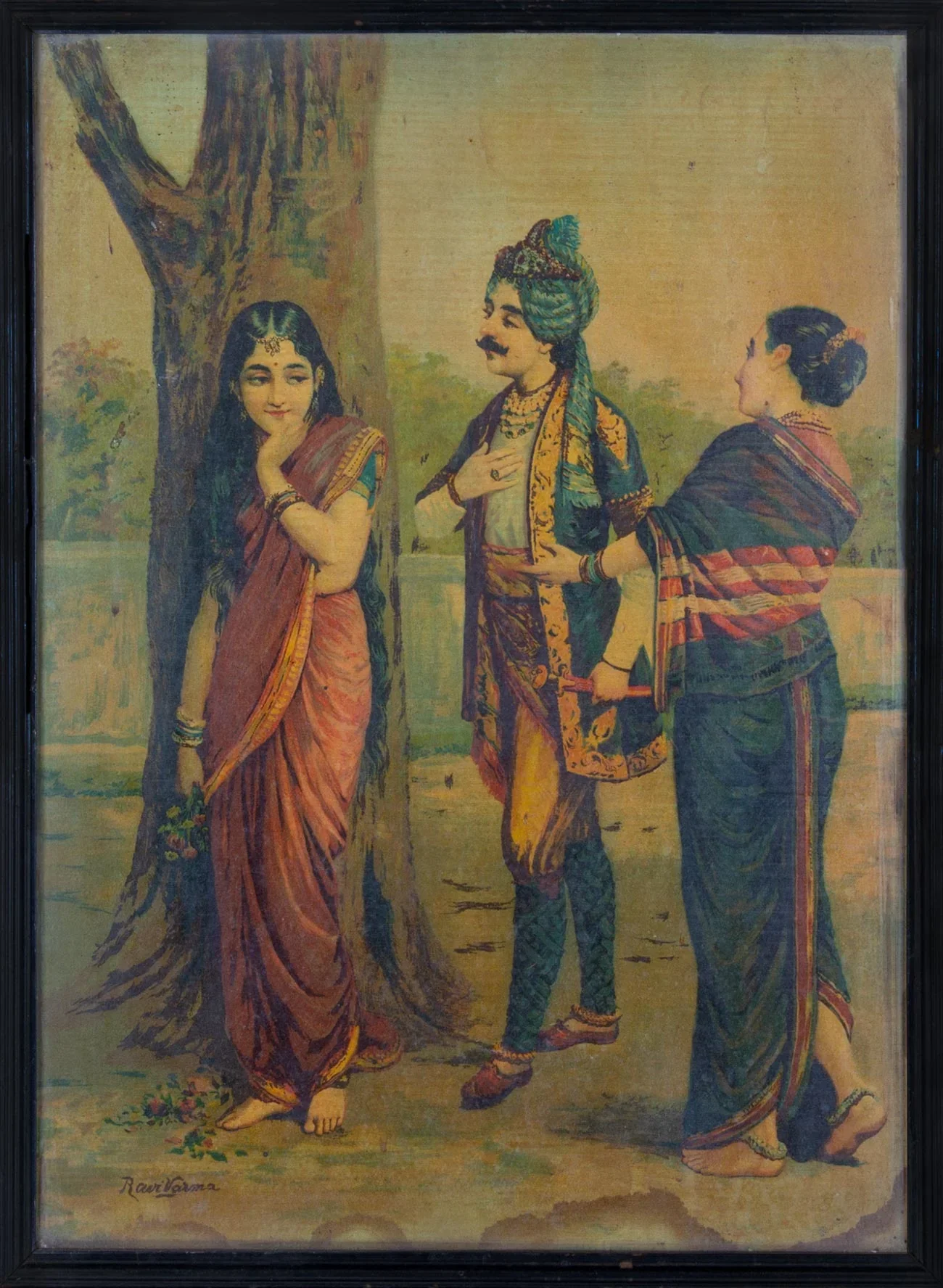![]() 22 Jul 2024
22 Jul 2024
India had a very rich and old tradition of manuscripts – in Sanskrit, Arabic, Persian, as well as in various vernacular languages. Manuscripts were copied on palm leaves or handmade paper. Pages were sometimes beautifully illustrated. They would be either pressed between wooden covers or sewn together to ensure preservation. Manuscripts continued to be produced till well after introduction of print, down to the late nineteenth century.
Limited Access: Manuscripts were highly expensive and not widely used.
Origin in India: The printing press was introduced to India by Portuguese missionaries in the 16th century.
Religious Discourse: Print culture had a profound impact on religious discourse in India in the early 19th century.
 |
| Figure 2: Raja Ritudhwaj by Raja Ravi Verma, Raja Ravi Varma produced innumerable mythological paintings that were printed at the Ravi Varma Press. |
New Literary Forms: Printing press created a demand for new kinds of writing, such as novels, short stories, essays, and lyrics.
Increase in Female Literacy: In late 19th and early 20th centuries, more and more women in India were learning to read.
Mass Accessibility: Cheap books were sold at crossroads in Madras towns in the 19th century, making them accessible to poor people.
Objective: The British East India Company was not initially concerned with censorship, but began to control the press in the 1820s to suppress criticism.
| Charles Metcalfe officiating governor general (1835-36) repealed an ordinance of 1823 and earned the title of “Liberator of Indian press”. The result of this liberal press policy level policies which continued unchanged till 1865 was the reason for the rapid growth of newspapers all over the country. |
| Must Read | |
| Current Affairs | Editorial Analysis |
| Upsc Notes | Upsc Blogs |
| NCERT Notes | Free Main Answer Writing |
Both industrialization and print have significantly influenced human society. The growth of cities, emergence of a working class, and the advancement of new technologies were all outcomes of industrialization. Printing technology facilitated the expansion of reading and writing skills, as well as the promotion of religious and social change, the sharing of thoughts, and the emergence of fresh types of media like newspapers and magazines.
Glossary
|
| Related Articles | |
| Mass Media Evolution in India: From Print to Digital Societal Dynamics | PORTUGUESE IN INDIA (1505-1961) |
| COMPANY RULE IN INDIA (1773-1858) | 3D printing technology |
<div class="new-fform">
</div>
